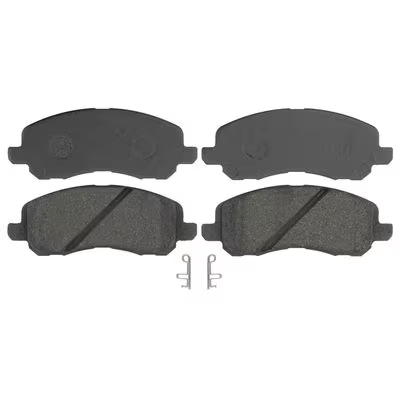Brake problems can sneak up on you. At first, it might just be a squeak or a soft pedal feel. But left unchecked, minor issues can turn into serious safety hazards. Whether you’re a hands-on DIYer or someone trying to better understand what your mechanic is telling you, knowing the basics of brake maintenance is essential. This guide breaks down where to begin, what signs to look out for, and how to keep your vehicle stopping safely every time.
Checking Your Brakes
The first step in tackling brake issues is performing a thorough check of your brake system. Start with a visual inspection: look at the brake pads through the wheel spokes. You should see at least a quarter inch of pad material. If it’s thinner than that, it’s time to replace them. For a complete walkthrough, AutoZone offers step-by-step guidance on how to replace brake pads, including the tools and parts you’ll need.
Pay attention to how your brakes feel when driving. A spongy brake pedal often signals air in the brake lines, while a vibrating pedal could indicate warped rotors. Squeaking or grinding noises are red flags that shouldn’t be ignored—these are often signs your pads are worn down or there’s debris in the system.
Another important component to check is your brake fluid. Low or dirty brake fluid can impact braking performance and even damage your master cylinder. Make it a habit to check your brake fluid reservoir when inspecting other fluids under the hood. It should be clear and fall within the recommended level; if it’s dark or murky, consider replacing it as part of your brake service.
Don’t forget the parking brake—this often-overlooked feature plays a critical role in keeping your vehicle secure. Make sure it engages firmly and holds the vehicle in place when parked on an incline. If it feels loose or doesn’t hold well, it could be a sign that the cable needs adjustment or the rear brakes need servicing.
Common Brake Problems and How to Avoid Them
Many brake problems are completely avoidable with regular maintenance and smart driving habits. For example, riding the brakes downhill can generate excessive heat, which causes brake fade—a condition where braking power is reduced. To avoid this, shift to a lower gear when descending and apply brakes intermittently instead of constantly.
Another common mistake is ignoring the signs of worn-out brake pads. Not only does this compromise stopping power, but it also risks damaging your rotors and calipers. Upgrading to the best brake pads for your driving style—whether you need quiet operation for city driving or high-performance pads for towing—can significantly improve your braking experience and save money over time.
Air in the brake lines is another culprit that leads to mushy brake pedal feel. This typically occurs after a brake component has been replaced or if there’s a leak in the system. A brake bleeder kit is a valuable tool that helps you flush out air and old fluid, ensuring consistent braking pressure. Bleeding your brakes may sound intimidating, but it’s a manageable DIY task with the right tools and instructions.
Rotor warping is also a concern, especially if you drive in hilly areas or carry heavy loads frequently. Warped rotors can cause shaking during braking and uneven pad wear. To prevent this, avoid aggressive braking and always torque your lug nuts properly after changing tires—uneven torque is a leading cause of rotor issues.
Lastly, make brake inspections a routine part of your vehicle maintenance. Aim to check your brakes every 12,000 miles or once a year, depending on how often and how aggressively you drive. Doing so not only improves safety but also helps catch small issues before they become costly repairs.
YOU MAY ALSO LIKE: Car Upgrades: Reasons for Window Tinting & Styling

